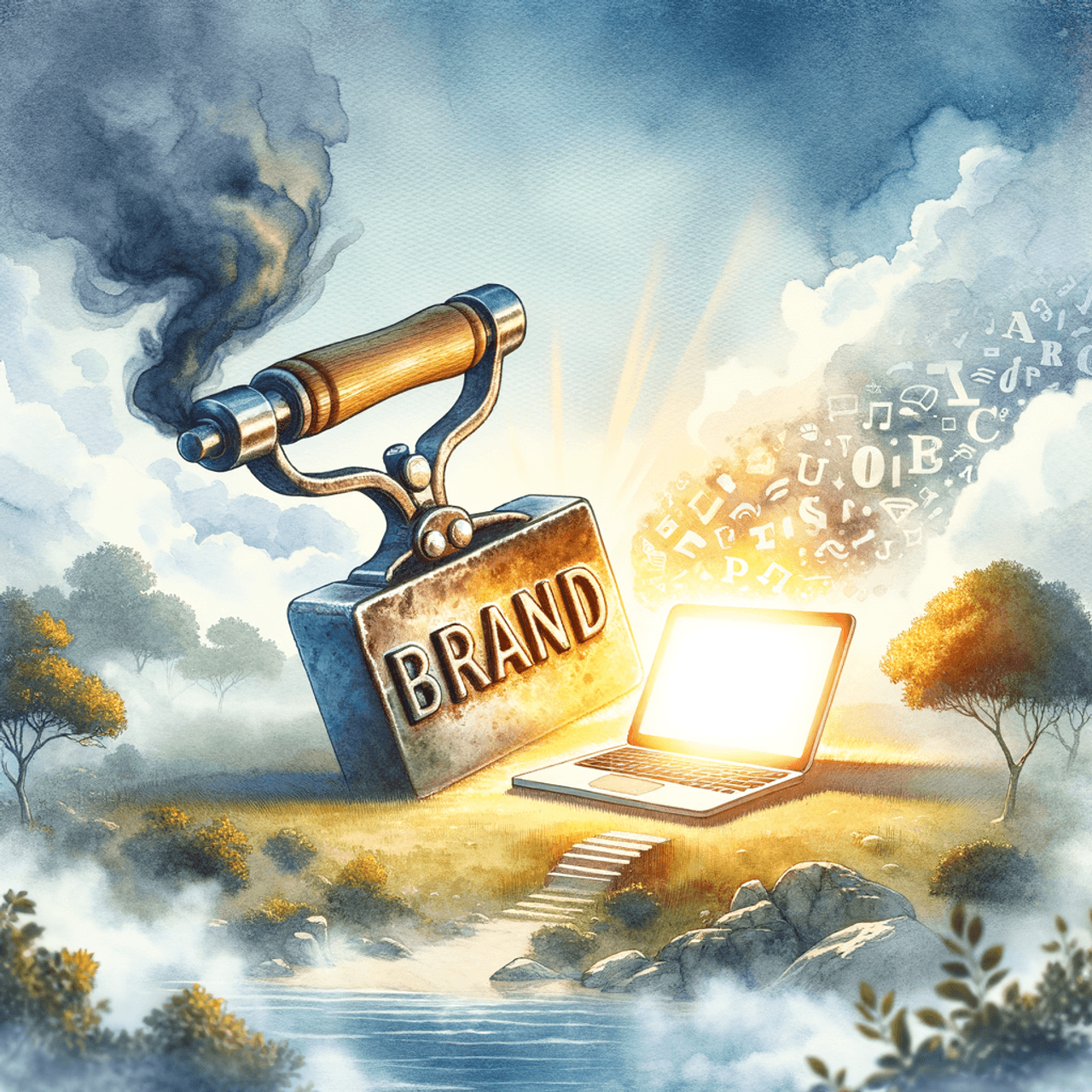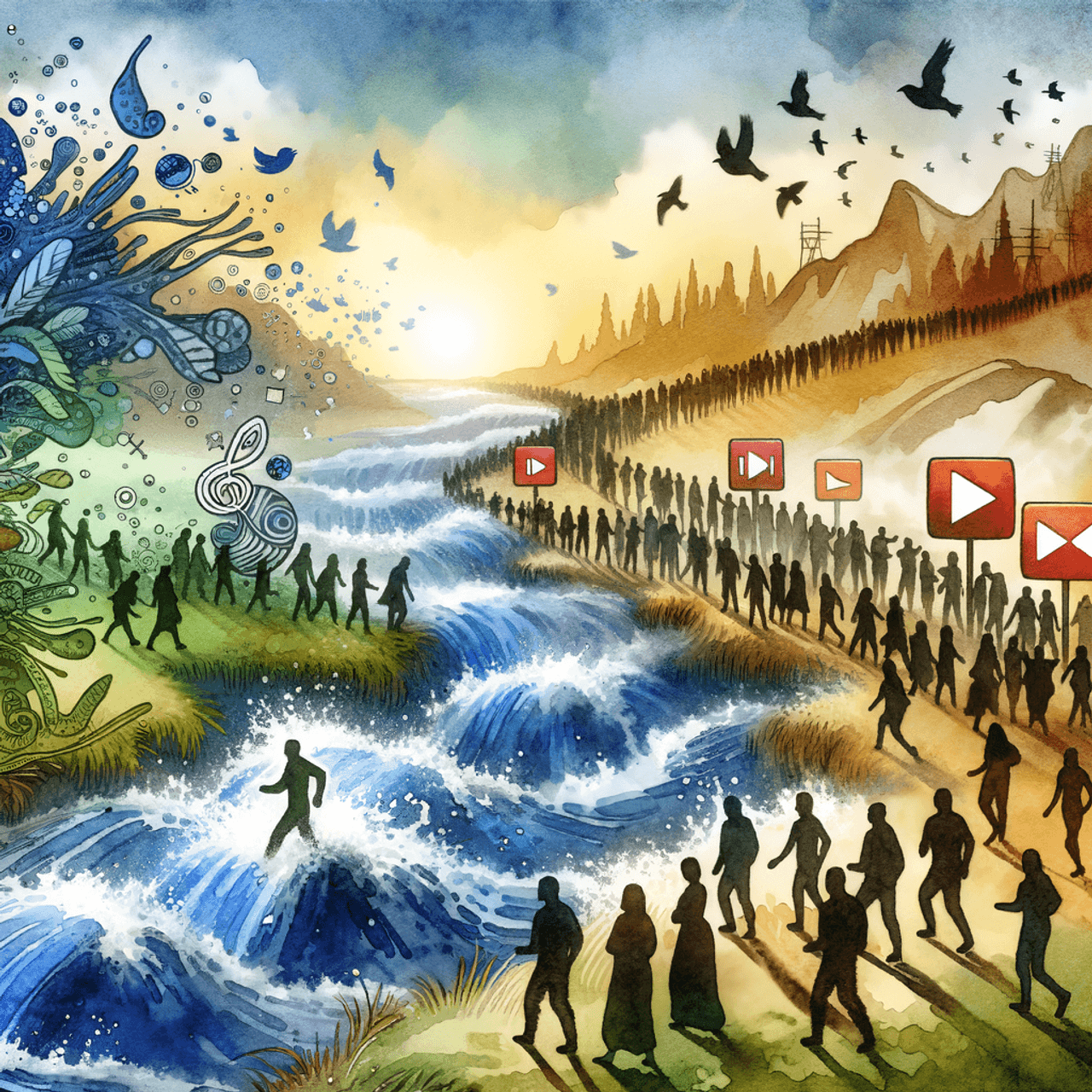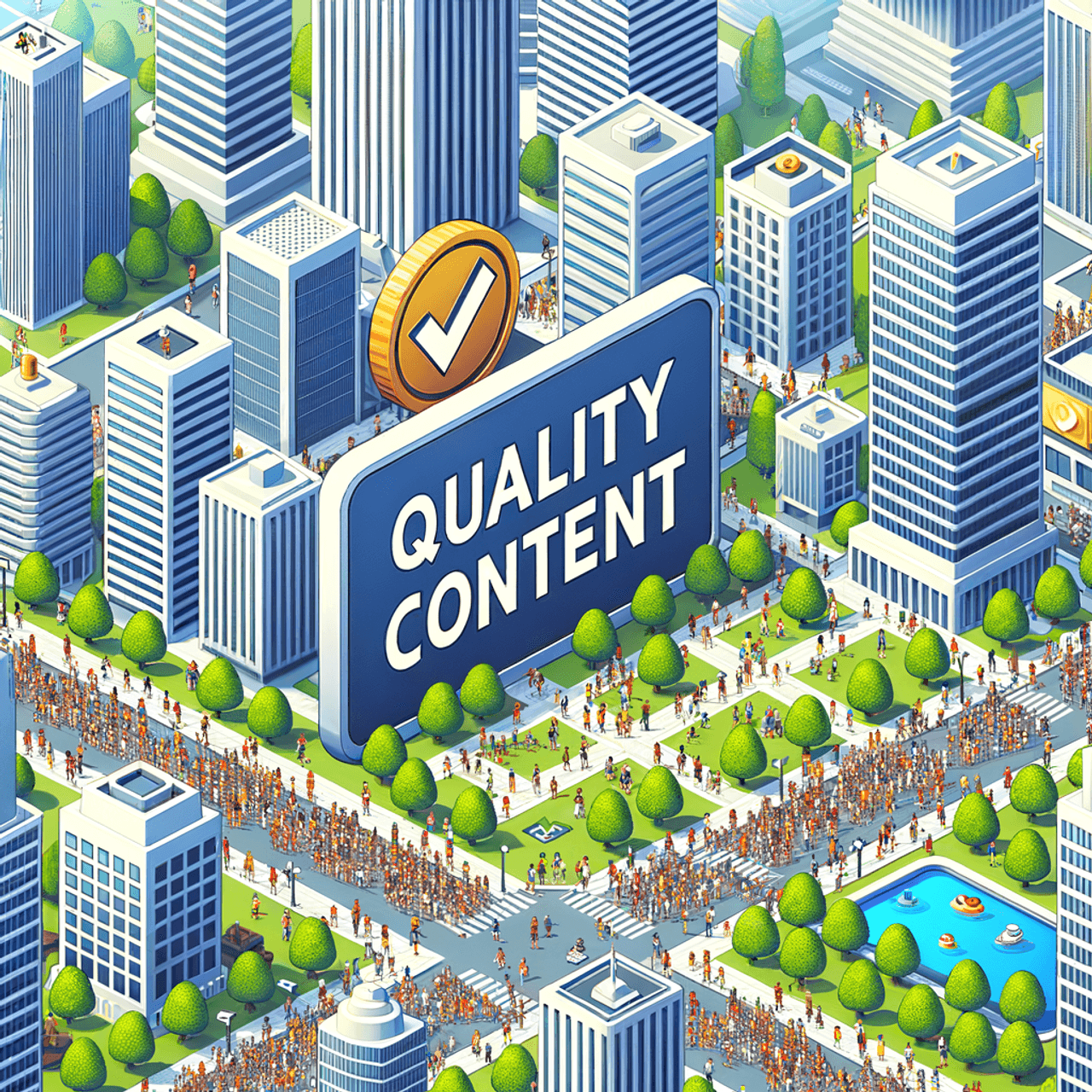by ContentERP | Oct 13, 2024 | Uncategorized
Why ContentERP is the Best Choice for Startups Looking to Build Their Brand
A Startup’s Kitchen Catastrophe
Imagine this: it’s your first dinner party as a budding chef. You’ve invited investors (who double as food critics), you’ve spent hours on a five-course meal, and the kitchen is humming like a well-oiled machine—or so you think. Just as you’re about to serve the main course, the oven dies. The dessert burns. The salad is…missing? Suddenly, your culinary masterpiece is crumbling, and you’re left scrambling to salvage it all.
 Now, swap out the kitchen for your startup’s brand, and the guests for potential customers. Without the right tools, building a brand can feel a lot like that chaotic kitchen scene. This is where ContentERP steps in, offering a platform that ensures startups never miss a beat when it comes to crafting brand content that resonates, engages, and builds loyalty. Think of it as your sous chef, keeping everything running smoothly so you can focus on the important part: growing your brand.
Now, swap out the kitchen for your startup’s brand, and the guests for potential customers. Without the right tools, building a brand can feel a lot like that chaotic kitchen scene. This is where ContentERP steps in, offering a platform that ensures startups never miss a beat when it comes to crafting brand content that resonates, engages, and builds loyalty. Think of it as your sous chef, keeping everything running smoothly so you can focus on the important part: growing your brand.
Brand Content: The Main Ingredient for Success
Every startup has that moment when they realize that simply existing isn’t enough. You need to build something—an identity, a voice, a connection with your audience. And in today’s digital age, branded content is the secret sauce that helps you do that. Whether it’s a sleek blog post, a punchy social media caption, or a video that tells your brand story, the content you create shapes how people perceive your company.
But here’s the catch: crafting high-quality, consistent brand content is no easy feat. It’s not just about slapping your logo onto a social media post and calling it a day. Your content needs to communicate your values, story, and vision in a way that sets you apart from the competition.
ContentERP makes this process smoother than a perfectly blended smoothie. By streamlining content creation, editing, and collaboration, it provides startups with a platform that transforms their ideas into engaging branded content—without the headaches. And because the platform is designed for efficiency, you can produce more content in less time, freeing you up to focus on the big picture: growing your brand.
What is Branded Content, and Why Does it Matter?
 Branded content is a bit like that signature dish a chef perfects over years of practice. It’s not an overt sales pitch; rather, it’s content that subtly ties back to your company’s values, mission, and products. It’s the story your brand tells without shouting, “Hey, buy my stuff!”
Branded content is a bit like that signature dish a chef perfects over years of practice. It’s not an overt sales pitch; rather, it’s content that subtly ties back to your company’s values, mission, and products. It’s the story your brand tells without shouting, “Hey, buy my stuff!”
Think of branded content as the conversation starter at a networking event. You don’t want to be the person who just hands out business cards with no context. Instead, you engage in meaningful conversations that naturally lead to connections. That’s what branded content does—it connects.
ContentERP understands the art of creating branded content. The platform helps startups craft stories that speak to their audience, not at them. Whether you’re drafting a thought leadership article or producing a product demo video, ContentERP equips you with the tools to create content that informs, engages, and resonates. It’s your backstage pass to crafting content that builds relationships and, ultimately, brand loyalty.
Efficiency Meets Creativity: The ContentERP Advantage
Let’s be honest: startups often operate on tight budgets and even tighter schedules. You’re juggling multiple roles—CEO by day, content creator by night. But what if you didn’t have to choose between running your business and building your brand?
ContentERP is built for startups like yours. The platform takes the grunt work out of content creation, offering everything from proofreading tools to project management features. It’s like having an all-in-one content factory where ideas are polished into high-quality branded content at the push of a button (or a few clicks). And the best part? It’s designed to help you maximize output without compromising quality.
Imagine ContentERP as your content-making machine. It doesn’t just churn out content—it helps shape that content into strategic, meaningful messages that connect with your audience. Like a master chef perfecting a recipe, ContentERP fine-tunes every element, ensuring that your brand content is cohesive, creative, and consistent.
Stay Ahead of the Content Game
In the ever-evolving world of digital marketing, trends shift as fast as a new dish goes viral on TikTok. What worked yesterday may not work tomorrow. This constant change can feel overwhelming, especially for startups trying to gain traction.
Luckily, ContentERP keeps its finger on the pulse of content trends. By offering insights into the latest shifts in digital marketing, the platform helps startups stay ahead of the curve. From SEO optimization to social media strategy, ContentERP ensures that your content not only meets today’s standards but anticipates tomorrow’s needs.
It’s like having a personal fortune teller for your content strategy—minus the crystal ball. With ContentERP, you’ll always know where the industry is heading and how to position your brand to take advantage of it.
Conclusion: A Recipe for Success
 So, what’s the secret to making your startup’s brand stand out in a sea of competitors? It’s simple: you need a platform like ContentERP. Whether you’re crafting a blog post, launching a new product, or fine-tuning your social media presence, ContentERP gives you the tools to create high-quality, engaging content that builds your brand from the ground up.
So, what’s the secret to making your startup’s brand stand out in a sea of competitors? It’s simple: you need a platform like ContentERP. Whether you’re crafting a blog post, launching a new product, or fine-tuning your social media presence, ContentERP gives you the tools to create high-quality, engaging content that builds your brand from the ground up.
And here’s the funny paradoxical question we’ll leave you with: If a brand creates amazing content but no one sees it, does it really exist? With ContentERP, you’ll never have to find out.
by ContentERP | Oct 13, 2024 | Uncategorized
How ContentERP Helps Brands Innovate and Stay Ahead of Content Trends
In 1848, during the California Gold Rush, prospectors flooded the West, each hoping to strike it rich. Those who succeeded weren’t just lucky—they were the ones who found new ways to dig deeper, smarter, and faster. But the real winners weren’t just the miners; it was the innovators who supplied the tools, like Levi Strauss, who created durable jeans for the hard-working miners. In many ways, ContentERP plays a similar role in today’s digital landscape. Just as the right tools were key to surviving the Gold Rush, having the right tools today is essential for staying ahead of rapidly shifting content trends.
Brands, like the prospectors of old, need to dig deep and innovate to find success in a crowded market. ContentERP is the modern-day equivalent of those durable tools, providing businesses with the necessary means to navigate the digital “rush” and strike gold in the form of high-quality, engaging content that leads the pack.
 Adapting to Content Trends: The New Gold Rush
Adapting to Content Trends: The New Gold Rush
Content creation in today’s world is like a gold rush—everyone is racing to produce the next big piece of content that captures attention. What worked last year, or even last month, may no longer be relevant. The landscape is constantly shifting, from the rise of short-form videos to interactive content. In this race, those who cling to outdated methods will be left behind.
This is where ContentERP proves invaluable. The platform’s AI-powered analytics and trend-monitoring tools give brands the edge they need to stay ahead. Think of it as the ultimate prospector’s map, highlighting the content trends worth pursuing and guiding brands away from strategies that no longer yield results. Instead of wasting time with trial and error, brands can rely on ContentERP to stay on top of emerging trends, keeping their content fresh and relevant.
Related: The Winning Guide: How to Hire Someone to Create a Content Creation Plan
From Reacting to Leading: Innovating with ContentERP
Many brands find themselves constantly reacting to the latest content trends, trying to catch up to what others have already done. This approach often leaves them chasing success rather than leading the charge. ContentERP enables businesses to flip the script, allowing them to become trendsetters rather than followers.
With advanced tools for content creation and collaboration, ContentERP turns the process of brainstorming and publishing into a streamlined experience. It’s like providing prospectors with a state-of-the-art drill while others are still using pickaxes. By automating tasks such as editing and proofreading, brands can focus on crafting the kind of creative, forward-thinking content that defines the future of their industry.
Cutting Through the Noise with Precision
In a digital world where every brand is vying for attention, standing out can feel like trying to shout over a crowded room. But instead of shouting louder, ContentERP allows brands to speak smarter. It helps refine content, ensuring that it is not only timely and relevant but also speaks directly to the audience’s needs and desires.
With tools that optimize content for SEO and provide real-time insights into audience behavior, ContentERP enables brands to cut through the digital noise like a hot knife through butter. It’s no longer about producing more content; it’s about producing the right content—content that resonates, engages, and drives action.
Think of ContentERP as a magnifying glass, focusing the brand’s efforts on what really matters, allowing them to shine more brightly in a world of distractions. Whether it’s crafting the perfect social media post or optimizing a blog for search engines, ContentERP ensures that every piece of content is a hit.
The Future of Content Innovation
 Much like the gold rush, the race for content dominance is far from over. In fact, the stakes are higher than ever. Staying ahead of content trends isn’t just a strategy—it’s a necessity. With ContentERP, brands have the tools they need to continuously innovate and adapt to whatever the digital landscape throws their way.
Much like the gold rush, the race for content dominance is far from over. In fact, the stakes are higher than ever. Staying ahead of content trends isn’t just a strategy—it’s a necessity. With ContentERP, brands have the tools they need to continuously innovate and adapt to whatever the digital landscape throws their way.
As we move forward, the question remains: Will your brand be the one that uncovers the next goldmine of content, or will it be left sifting through the dirt for missed opportunities?
Related: How to add users to team
by ContentERP | Oct 13, 2024 | Uncategorized
Why Quality Content Starts with ContentERP’s Proofreading and Editing Tools
A Writer’s Crisis: When Quality Slips Through the Cracks
Sophia stared at her screen, blinking at the sea of words she’d just poured into her article. A seasoned content creator, she was confident that her years of experience would carry her through any deadline. But something was off. The sentences felt fragmented, the structure unpolished, and the flow lacked that smooth, readable rhythm that distinguishes high-quality content from mediocre. For the first time in her career, she felt doubt creeping in.
 The clock was ticking. Sophia needed a solution, fast. She had used all her usual tricks—reading aloud, changing fonts, even printing the document and attacking it with a red pen. Nothing seemed to work. That’s when a colleague suggested ContentERP’s proofreading and editing tools. “It’s like having a second set of expert eyes,” they assured her.
The clock was ticking. Sophia needed a solution, fast. She had used all her usual tricks—reading aloud, changing fonts, even printing the document and attacking it with a red pen. Nothing seemed to work. That’s when a colleague suggested ContentERP’s proofreading and editing tools. “It’s like having a second set of expert eyes,” they assured her.
Curious but skeptical, she signed up. What followed was a revelation. The editing suggestions were not just about spelling or grammar; they reshaped her work, maintaining her voice while fine-tuning every sentence. It was as if her words had been waiting to find their true form, and ContentERP was the sculptor.
Sophia’s story isn’t unique. Many writers—whether seasoned professionals or budding creators—face the same struggle: creating quality content that doesn’t just fill space but captivates, engages, and informs. That’s why quality content truly begins with strong proofreading and editing, and why ContentERP’s tools are revolutionizing the process.
The Foundation of High-Quality Content
Like constructing a house, the foundation of content must be solid before any aesthetic touches can be applied. Without a strong base, no amount of polish can save a crumbling structure. In the world of content creation, this foundation is proofreading and editing.
ContentERP’s tools aren’t just another pair of grammar-checking eyes. They are a multi-layered process that works like an orchestra, each part harmonizing with the other. By integrating AI technology with the touch of human experience, ContentERP ensures that your content is free from not only surface-level mistakes but deeper structural issues that could undermine the clarity or impact of the message.
Think of your content as a diamond in the rough. Editing is the meticulous, skillful cutting that transforms it from a dull stone into a glittering jewel, ready to catch the reader’s eye. Without that process, the diamond’s potential remains hidden beneath its imperfections.
More Than Just Grammar: Ensuring the Flow
 Most people think proofreading is just about catching those pesky typos or fixing awkward commas. In reality, it’s much more than that. ContentERP’s proofreading and editing tools are designed to dig deeper.
Most people think proofreading is just about catching those pesky typos or fixing awkward commas. In reality, it’s much more than that. ContentERP’s proofreading and editing tools are designed to dig deeper.
Imagine trying to run with one shoe on, and one shoe off. That’s what a poorly structured article feels like—unbalanced and difficult to follow. ContentERP takes your content and smooths out the bumps, ensuring the pacing of ideas and the logical flow of information are both seamless. Like the steady beat of a well-constructed symphony, high-quality content needs rhythm, and that’s exactly what these tools help provide.
By using ContentERP, creators can ensure that their articles have a smooth and engaging flow, guiding the reader from one idea to the next with ease. It’s not just about what you say; it’s about how you say it. And ContentERP ensures that how you say it is compelling, clear, and coherent.
Related: How to add users to team
Content that Speaks with Authority
ContentERP understands that today’s audience is savvy and demands content that speaks with authority and confidence. But crafting high-quality content goes beyond expertise—it’s about how you present that expertise. A poorly edited article, no matter how informative, can undermine your credibility.
Using ContentERP is like having a seasoned editor by your side, making sure that your voice shines through with confidence. The tools identify inconsistencies in tone, suggest ways to tighten up your arguments, and remove any fluff that may weaken the article. Like a sculptor chiseling away unnecessary stone, ContentERP reveals the true shape and strength of your content, ensuring that it stands tall among the noise of lesser-quality articles.
In an era where trust is currency, producing content that conveys expertise is essential for building relationships with readers. Whether you’re writing an educational blog post or a thought leadership piece, ContentERP ensures your content is clear, direct, and authoritative.
The Magic of Meticulous Editing
Editing, when done right, can transform a piece from ordinary to extraordinary. It’s like adding seasoning to a dish—too little and it’s bland, too much and it’s overwhelming. But just the right amount can elevate the flavors and turn a simple meal into a gourmet experience.
ContentERP’s editing tools help find that balance. It highlights areas where your content might be too verbose or too vague. It suggests alternatives where your phrasing could be more impactful or where transitions need a smoother bridge. By doing this, it ensures that your content reads effortlessly, even if the subject matter is complex.
Quality content is much like a well-crafted painting. Each brushstroke matters, and the difference between good and great often lies in the details. With ContentERP’s tools, those details are given the attention they deserve, ensuring that your final product is a masterpiece rather than a draft-in-progress.
Efficiency Meets Excellence
 One of the most underrated aspects of content creation is the time spent revising and editing. For many writers, it’s a time-consuming process, filled with second-guessing and endless revisions. ContentERP streamlines this.
One of the most underrated aspects of content creation is the time spent revising and editing. For many writers, it’s a time-consuming process, filled with second-guessing and endless revisions. ContentERP streamlines this.
Imagine having an assistant who not only points out the obvious errors but also provides insightful suggestions to refine your work. That’s exactly what ContentERP’s tools offer—a way to increase efficiency without sacrificing quality. The time saved allows creators to focus more on the creative aspects of writing, knowing that the technical side is well-handled.
In this fast-paced digital age, where content is produced and consumed at lightning speed, maintaining both quality and efficiency is crucial. ContentERP strikes the perfect balance, ensuring that writers don’t have to compromise on one for the sake of the other.
Why Quality Content Matters Now More Than Ever
In a world awash with content, standing out requires more than just good ideas. It demands execution—refining those ideas into a polished form that grabs attention, builds trust, and drives engagement. High-quality content doesn’t just fill a webpage; it tells a story, solves a problem, or offers valuable insights that keep readers coming back for more.
Whether you’re building an eCommerce site, running a blog, or curating content for a social media campaign, the difference between mediocre and excellent often comes down to the final stages of editing and proofreading. Without careful revision, even the best ideas can fall flat.
ContentERP recognizes this truth. That’s why its proofreading and editing tools are designed not just to correct but to elevate. They ensure that every word, sentence, and paragraph contributes to the overall effectiveness of the content, transforming it from simple text into something with purpose and impact.
Conclusion: The Power of Refinement
 Sophia’s experience with ContentERP’s proofreading and editing tools wasn’t just a one-time fix; it became an essential part of her content creation process. Like a craftsman polishing their work, she realized that great content is rarely created in a single draft. It takes refinement, precision, and the willingness to make changes—all of which ContentERP makes easier.
Sophia’s experience with ContentERP’s proofreading and editing tools wasn’t just a one-time fix; it became an essential part of her content creation process. Like a craftsman polishing their work, she realized that great content is rarely created in a single draft. It takes refinement, precision, and the willingness to make changes—all of which ContentERP makes easier.
In the world of content creation, the tools you use can either be a stumbling block or a stepping stone. For those serious about producing high-quality content, ContentERP is that stepping stone—a reliable partner in the pursuit of excellence.
As the Japanese saying goes, “Vision without action is a daydream. Action without vision is a nightmare.” ContentERP provides both the vision and the tools to turn that vision into reality, ensuring that your content isn’t just good—it’s exceptional.
by ContentERP | Oct 13, 2024 | Uncategorized
From Brainstorming to Publishing: How ContentERP Organizes It All
 Once upon a time in a forest, a group of animals decided to write a book together. The owl, being wise, suggested the idea, the squirrel eagerly started jotting down notes, and the rabbit, always in a hurry, demanded that they publish the book the very next day. The turtle, slow but steady, advised caution, saying that organizing everything from brainstorming to publishing was crucial. But with everyone working at different paces and without any proper system, chaos ensued.
Once upon a time in a forest, a group of animals decided to write a book together. The owl, being wise, suggested the idea, the squirrel eagerly started jotting down notes, and the rabbit, always in a hurry, demanded that they publish the book the very next day. The turtle, slow but steady, advised caution, saying that organizing everything from brainstorming to publishing was crucial. But with everyone working at different paces and without any proper system, chaos ensued.
The story they were writing went nowhere—notes were scattered, ideas lost, and deadlines missed. That is until the fox, clever as always, introduced them to a magical tool that could organize everything effortlessly, from brainstorming to publishing. This magical tool, much like ContentERP for content creators, brought clarity and structure to their process, and soon, their book became a bestseller in the forest.
Much like the animal authors in the fable, teams today often struggle with moving from idea generation to final publication. Whether it’s content writers, editors, or managers, staying organized through every stage is the key to creating high-quality content. That’s where ContentERP steps in, making the entire journey—from brainstorming to publishing—smooth, efficient, and downright enjoyable.
Brainstorming: Turning Ideas into Action
Every great piece of content starts with an idea, but ideas, like sparks, can be fleeting. ContentERP captures those sparks and transforms them into tangible projects. It’s like having a brainstorming session with a team of note-taking wizards who never let a good idea slip through the cracks.
With creative writing platforms and tools that allow teams to collaborate in real-time, ContentERP makes it easy to track ideas, assign tasks, and even group them based on project needs. No more sticky notes on the wall or forgotten suggestions buried in emails. ContentERP turns the chaos of brainstorming into a well-organized treasure trove of creative energy, making it one of the most efficient writing platforms for writers.
Workflow Automation: From Concept to Creation
Have you ever tried building a house without a blueprint? It would be a disaster! Similarly, writing without a clear workflow is a recipe for disorganization. ContentERP acts as the blueprint for content creation, automating processes and ensuring that every piece of content moves seamlessly through the pipeline.
From assigning roles to setting deadlines and tracking progress, this tool is the metaphorical architect of content strategy. It ensures that writers write, editors edit, and managers manage—all without overlap or confusion. The automation features are like the gears of a well-oiled machine, quietly working in the background to keep everything running smoothly. Like the squirrel in our fable, there’s no need to scramble when tasks are neatly organized.
Collaboration: Everyone on the Same Page
The key to successful content publishing is teamwork. Yet, collaboration can sometimes feel like a game of telephone, where important messages get lost or distorted. With ContentERP, collaboration feels more like a symphony—everyone playing their part in harmony.
It provides a centralized platform where team members can communicate, share feedback, and stay informed at every stage of content creation. Writers know what needs to be written, editors know what needs to be polished, and managers can track progress in real-time. It’s like watching an orchestra, with ContentERP as the conductor, ensuring that every note is hit perfectly.
Publishing: From Draft to the Digital Stage
Once the content is polished and ready to go, publishing is often the final, nerve-wracking step. But with ContentERP, web publishing examples are as seamless as clicking a button. It integrates with various platforms, allowing for easy scheduling, posting, and even performance tracking.
Whether it’s blog posts, social media content, or whitepapers, ContentERP ensures that your content is published across all relevant channels without a hitch. Like the fox in our fable, it’s clever and efficient, bringing your content to the world in a flash. It transforms writing platforms for writers into publishing platforms, ensuring that what’s created is also shared widely.
Related: Create Content With ContentERP
Conclusion: The Magic of ContentERP
 In the end, the animals in the forest completed their book thanks to the fox’s magical tool. In the same way, ContentERP helps content teams, writers, and publishers organize everything from the initial idea to the final product, ensuring nothing is lost along the way. It’s not just a tool—it’s the silent partner in every successful content strategy.
In the end, the animals in the forest completed their book thanks to the fox’s magical tool. In the same way, ContentERP helps content teams, writers, and publishers organize everything from the initial idea to the final product, ensuring nothing is lost along the way. It’s not just a tool—it’s the silent partner in every successful content strategy.
So, the next time you find yourself drowning in scattered ideas or missed deadlines, ask yourself: Can a tool really make everything as easy as it seems? Perhaps. Or maybe, as the fox would say, “The secret to success is simply knowing where to look.” And with ContentERP, getting started has never been easier.
by ContentERP | Oct 13, 2024 | Uncategorized
How ContentERP’s Instant Notifications Keep Your Team on Track
“What is the one thing that keeps a team from spiraling into chaos?” asked Stephen Covey, author of The 7 Habits of Highly Effective People. Covey emphasized the importance of accountability in team success. But in today’s fast-paced, content-driven world, how can you ensure that every team member is accountable without turning into a micromanager? How do you keep everyone on the same page when the clock is ticking and deadlines are looming?
 Enter ContentERP’s instant notifications—a tool that’s not just about updates, but about keeping your content team synchronized, informed, and moving forward like a well-oiled machine. Much like a conductor directing an orchestra, these notifications guide your team in perfect harmony, ensuring no task is overlooked and no deadline missed. Let’s dive into how these notifications can transform your content team’s workflow and efficiency.
Enter ContentERP’s instant notifications—a tool that’s not just about updates, but about keeping your content team synchronized, informed, and moving forward like a well-oiled machine. Much like a conductor directing an orchestra, these notifications guide your team in perfect harmony, ensuring no task is overlooked and no deadline missed. Let’s dive into how these notifications can transform your content team’s workflow and efficiency.
Never Miss a Beat: Notifications That Are Always on Time
Imagine your content team is like a group of jugglers, each one skillfully tossing multiple tasks into the air. Now, imagine trying to juggle without knowing which task is coming next. It’s easy for balls to be dropped. ContentERP’s instant notifications ensure that every team member knows exactly what to do and when to do it.
These notifications act like a reliable alarm clock that always rings at the right time—never too early, never too late. Whether it’s reminding a content creator of an impending deadline or alerting an editor that a draft is ready for review, ContentERP’s notifications keep the wheels turning smoothly. There’s no guesswork or anxiety about what’s next—everything is delivered in real time.
Streamlining Content Team Roles with Instant Updates
In any content creation team, roles and responsibilities are often clearly defined, but execution can sometimes be a different story. Writers create, editors refine, and project managers ensure everything moves like clockwork. However, communication between these roles can sometimes feel like a game of telephone, where important messages get lost in translation.
ContentERP’s instant notifications help avoid these communication breakdowns by keeping every team member updated in real time. When a writer finishes an article, an editor is instantly notified. When a project manager shifts the deadline, the team knows immediately. It’s like having an invisible thread that ties everyone together, ensuring no one is ever out of the loop. With the click of a button, your content creation team moves from task to task seamlessly, much like a dance troupe where every step is perfectly choreographed.
Boosting Accountability with Real-Time Feedback
One of the biggest challenges content teams face is ensuring accountability without stifling creativity. No one wants to feel like they’re under constant surveillance, yet deadlines must be met, and tasks must be completed on time.
ContentERP’s instant notifications strike the perfect balance. They ensure that every team member is aware of their responsibilities and deadlines, providing gentle nudges rather than heavy-handed oversight. It’s like having a personal assistant who knows when to remind you of what needs to be done, allowing your team to stay on top of tasks without feeling overwhelmed or micromanaged. This system not only enhances accountability but also boosts team morale, as everyone knows they’re contributing to the bigger picture.
Collaboration in Real Time: No Delays, No Excuses
In the world of content creation, collaboration is key. Writers, designers, editors, and project managers must work together seamlessly to produce high-quality content. However, waiting for responses or updates can slow the process down, creating bottlenecks and causing frustration.
ContentERP’s notifications ensure that there’s no waiting around. Designers know as soon as a brief is ready. Editors are informed the moment drafts are submitted. It’s like having a constant flow of information that keeps everyone connected and moving forward together. Gone are the days of wondering if a task has been completed or a document has been reviewed. With real-time notifications, the entire content team can collaborate efficiently and productively, without missing a beat.
Notifications as the Unsung Heroes of Team Efficiency
 In the world of content creation, ContentERP’s instant notifications are the unsung heroes—quietly working behind the scenes to ensure every team member is in the right place at the right time. They are the watchful guardians that keep your team on track, the silent motivators that boost productivity without interrupting creativity.
In the world of content creation, ContentERP’s instant notifications are the unsung heroes—quietly working behind the scenes to ensure every team member is in the right place at the right time. They are the watchful guardians that keep your team on track, the silent motivators that boost productivity without interrupting creativity.
So, the next time you wonder how to keep your team from veering off course, ask yourself: Can notifications really keep everyone on track without being intrusive? In the paradoxical world of productivity, sometimes the smallest nudges—like a timely notification—can have the biggest impact.
And as Oscar Wilde once said, “The only thing to do with good advice is to pass it on. It is never of any use to oneself.” ContentERP’s notifications are that subtle yet powerful advice your team didn’t know it needed, until now.
by ContentERP | Oct 13, 2024 | Uncategorized
How ContentERP Integrates Your Favorite Tools for Seamless Content Creation
Imagine a busy beehive, with each bee working tirelessly in perfect harmony. There’s no chaos, no disorganization. Every bee has a role, and each task is essential to the hive’s success. Much like the bees, content creation can feel overwhelming without the right tools working in sync. However, just as the bees collaborate to produce honey, you can create seamless, high-quality content when your favorite tools are perfectly integrated with ContentERP.
 In today’s fast-paced digital world, where content creation can feel like a race against time, having the right tools at your fingertips is key. But what if these tools worked in harmony, helping you create faster, better, and with less effort? That’s where ContentERP steps in, integrating your favorite content creation tools to streamline the entire process.
In today’s fast-paced digital world, where content creation can feel like a race against time, having the right tools at your fingertips is key. But what if these tools worked in harmony, helping you create faster, better, and with less effort? That’s where ContentERP steps in, integrating your favorite content creation tools to streamline the entire process.
ContentERP: The Ultimate Hub for Content Creation Tools
In a world where technology is evolving at lightning speed, having a single platform that merges all your tools can make or break your content strategy. ContentERP allows you to do just that—integrating the best tools for content creation into one seamless workflow.
Think of it as the conductor of an orchestra. Without coordination, instruments would clash and disrupt the music. But when everything is aligned, the sound is harmonious, and the performance is spectacular. ContentERP plays that role for content creators, ensuring that all the different tools—from design software to writing assistants—work in unison.
Whether you’re using graphic design platforms like Canva, social media management tools like Buffer, or AI writing generators, ContentERP ensures all these tools come together in a single, intuitive platform. No more switching between tabs, no more juggling different apps—everything is right there at your fingertips.
Content Creation Tools That Fit Like Puzzle Pieces
Imagine putting together a jigsaw puzzle. Every piece is crucial to completing the image, but only when they all fit perfectly do you get the full picture. In the same way, content creation tools are like puzzle pieces. When integrated properly, they form the complete picture of a successful content strategy.
ContentERP integrates popular tools like large language models for content polishing, an AI image generator for finding stunning images, and keyword research tool for tracking performance. These tools, when combined within the ContentERP platform, create an ecosystem that supports every stage of content creation—from brainstorming ideas to publishing and tracking the content’s performance.
By offering such integrations, ContentERP makes it easier to switch between tasks, all while maintaining the flow of your creative process. In short, it takes the fragmented pieces of content creation and assembles them into one cohesive whole.
Why Integration Matters for Content Creators
Have you ever tried juggling? It’s easy enough with two balls, but what happens when you add a third or fourth? The more items you add, the harder it becomes to keep everything in the air. That’s often what content creation feels like when you’re working with multiple tools—each one necessary, but without a way to balance them all seamlessly.

ContentERP solves this juggling act by integrating all your tools into one platform, letting you focus on creativity rather than logistics. When your design software, writing tools, and analytics are all under the same roof, it feels like everything clicks into place.
Simplifying Your Content Creation Ideas
For content creators, generating fresh and creative ideas can sometimes feel like mining for gold—tedious, slow, and often frustrating. But with ContentERP’s tool integrations, the process becomes less daunting. By bringing together keyword research tools, content generators, and planning calendars in one space, the platform helps you brainstorm content ideas with ease.
The power of these integrations means you can start with an idea, refine it using content optimization tools, design it with the perfect images, and schedule it for publication—all without leaving the platform. It’s like having an assistant who knows exactly what you need at every stage of the content creation process.
A Workflow as Smooth as Silk
Remember the bees from the start? Their work is seamless, and every action flows into the next. That’s the kind of workflow you get with ContentERP. By integrating the tools you use daily, the platform ensures that there are no unnecessary hiccups in your content production process.
For instance, if you’re working on social media content, ContentERP integrates scheduling tools, allowing you to plan and publish posts from the same platform. It’s a one-stop shop for all your content needs, reducing the friction between different stages of content production and making sure you never miss a deadline.
Conclusion: Tools in Harmony with ContentERP
 In content creation, as in life, having the right tools makes all the difference. But even more important is how those tools work together. With ContentERP, your content creation process becomes more efficient, more enjoyable, and far less stressful.
In content creation, as in life, having the right tools makes all the difference. But even more important is how those tools work together. With ContentERP, your content creation process becomes more efficient, more enjoyable, and far less stressful.
As the great author and entrepreneur, Tim Ferriss once said, “Focus on being productive instead of busy.” ContentERP helps you do exactly that by bringing all your favorite tools together in a way that enhances productivity rather than complicates it. It eliminates the busy work, allowing you to focus on what truly matters: creating great content.
So, what’s next for you? Will you continue juggling multiple tools and tabs, or will you bring everything together under one roof with ContentERP? With the seamless integration it offers, the choice seems
Now, swap out the kitchen for your startup’s brand, and the guests for potential customers. Without the right tools, building a brand can feel a lot like that chaotic kitchen scene. This is where ContentERP steps in, offering a platform that ensures startups never miss a beat when it comes to crafting brand content that resonates, engages, and builds loyalty. Think of it as your sous chef, keeping everything running smoothly so you can focus on the important part: growing your brand.
Branded content is a bit like that signature dish a chef perfects over years of practice. It’s not an overt sales pitch; rather, it’s content that subtly ties back to your company’s values, mission, and products. It’s the story your brand tells without shouting, “Hey, buy my stuff!”
So, what’s the secret to making your startup’s brand stand out in a sea of competitors? It’s simple: you need a platform like ContentERP. Whether you’re crafting a blog post, launching a new product, or fine-tuning your social media presence, ContentERP gives you the tools to create high-quality, engaging content that builds your brand from the ground up.
